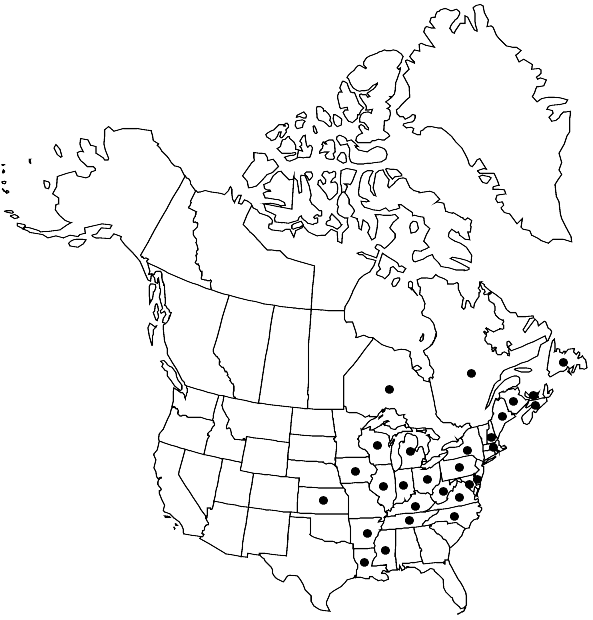Atrichum crispulum
Ann. Sci. Nat., Bot., sér. 7, 17: 351. 1893,.
Plants large, green to dark green, becoming brown to reddish-brown with age. Stems to 6 cm, sometimes matted with whitish rhizoids. Leaves 5–9 × 0.8–1.6 mm, densely imbricate, lingulate to lanceolate, plane to slightly keeled and concave, obliquely transversely undulate, often with rows of teeth on undulations on abaxial surface, the apex attenuate; costa subpercurrent to percurrent, with abaxial teeth along the undulations in distal half; lamellae 4–6, laxly spreading, 2–4 (–6) cells high; median leaf cells 24–27 (–30) µm wide, rounded to irregularly angled, weakly convex on both surfaces, thick-walled, strongly collenchymatous with trigones, smooth or usually with minute, rounded or striate papillae on abaxial surface. Sexual condition dioicous; male plants as large as females, perigonial bracts small, imbricate, ovate or suborbicular, often more than one perigonial bud in sequence per shoot. Seta 1–3 per perichaetium, 1.5–4 cm, reddish-brown. Capsule 4–7 × 0.5–1 mm, usually somewhat curved and inclined, rarely straight and erect; operculum 2–3.5 mm. Spores 12–19 µm.
Phenology: Capsules mature summer (Jun–Aug).
Habitat: Soil, humus, mostly shaded habitats, often wet banks along streams or sometimes at margins of fens and swamps
Elevation: low to high elevations
Distribution

N.B., Nfld. and Labr. (Nfld.), N.S., Ont., P.E.I., Que., Ark., Del., Ill., Ind., Iowa, Kans., Ky., La., Maine, Md., Mass., Mich., Miss., N.H., N.Y., N.C., Ohio, Pa., Tenn., Va., W.Va., Wis., e Asia (China), e Asia (Japan)
Discussion
Atrichum crispulum is a large, handsome, dioicous species, distinguished by its broad leaves with few, low lamellae, long, narrow, curved capsules, and by its growth in shaded, wet environments on banks along streams and at margins of fens and swamps. Atrichum undulatum, on the other hand, prefers dry weedy habitats, and when sterile can be distinguished from A. crispulum by the reddish brown rhizoids more or less confined to the base of the plant, instead of matted whitish rhizoids often extending well up the stem in A. crispulum. As suggested by R. R. Ireland (1969), the “paraphyllia” in the type of A. paraphyllium Wareham are innovations probably caused by the plants being buried in sand. In recent North American literature this species has been called A. oerstedianum (Müller Hal.) Mitten, but comparisons with the type of A. oerstedianum indicate that the two are distinct. Atrichum oerstedianum, a species of Mexico and Central America, has leaves broadly elliptic-lanceolate with an obtuse apex, only sporadically toothed on the abaxial surface and not undulate, lamellae (2–)4–5, 1–2 cells high, often interrupted, and a colored border. The cells of the lamina are irregular in size and shape, with a “disordered” arrangement as opposed to the more regular arrangement of cells in longitudinal rows in A. crispulum.
Selected References
None.
Lower Taxa
"broadened" is not a number."narrower" is not a number.